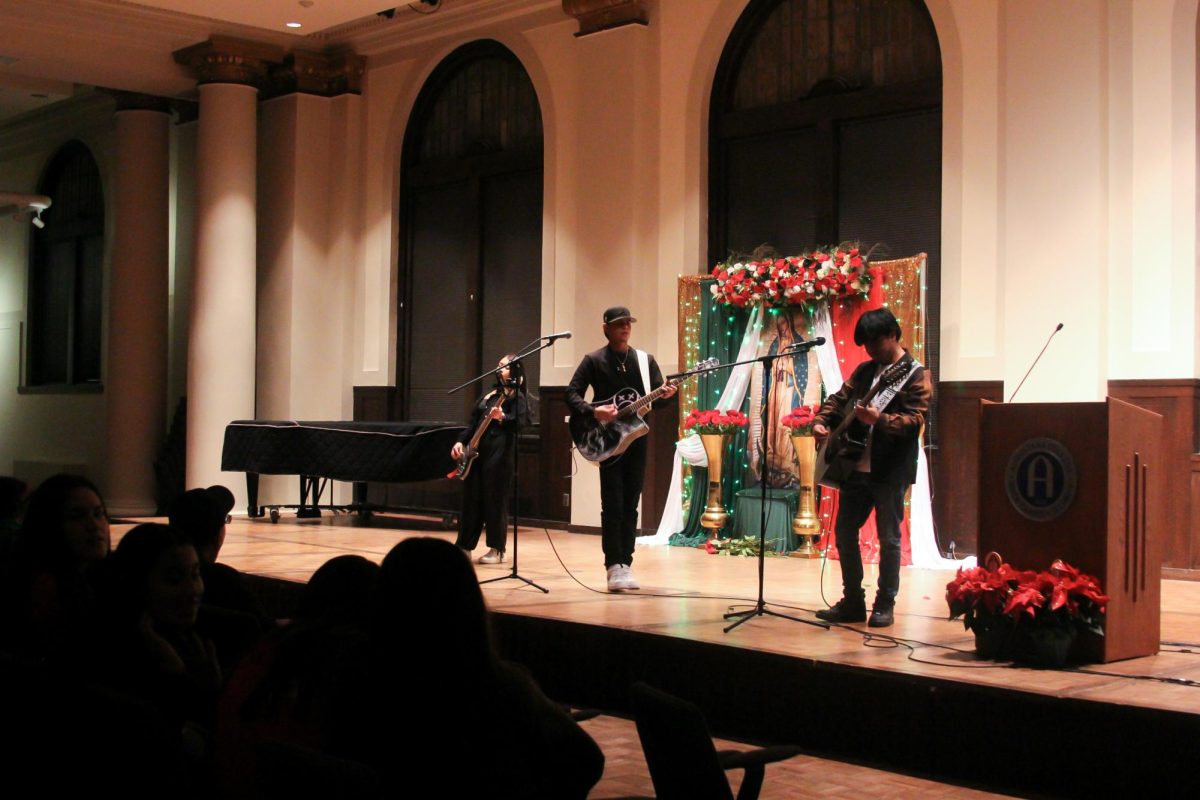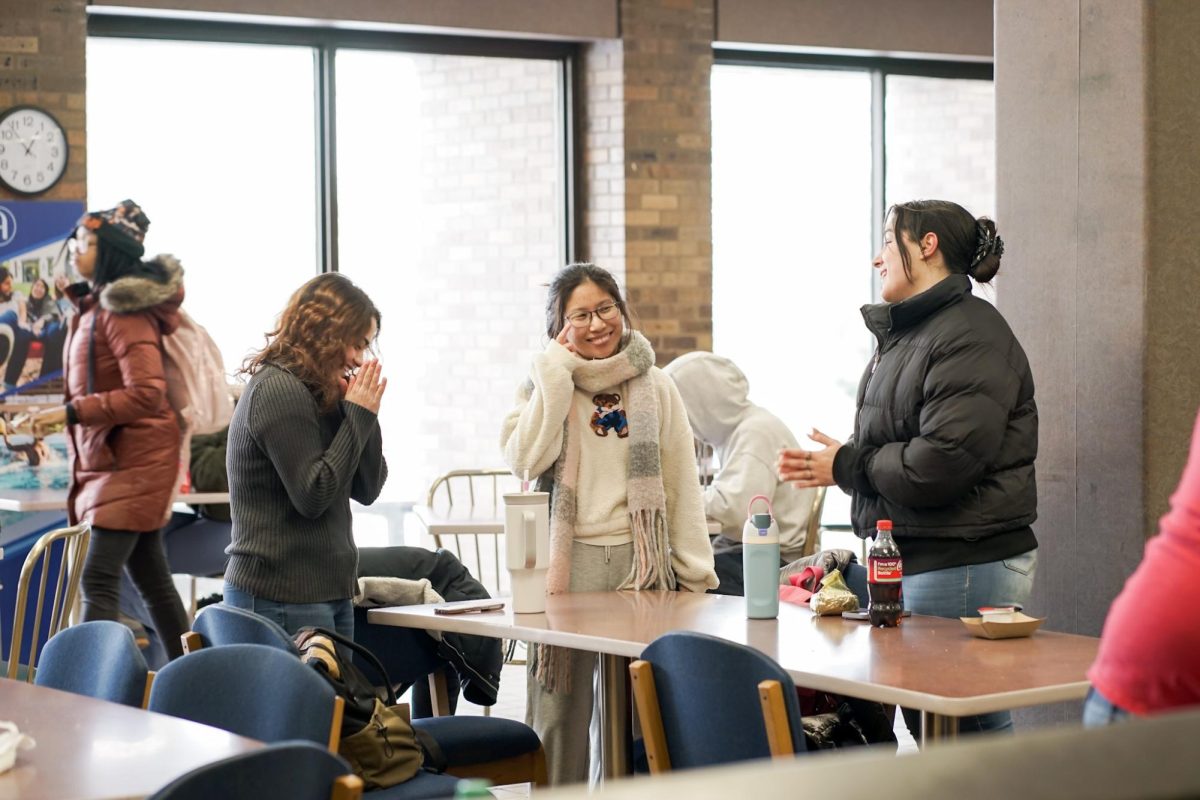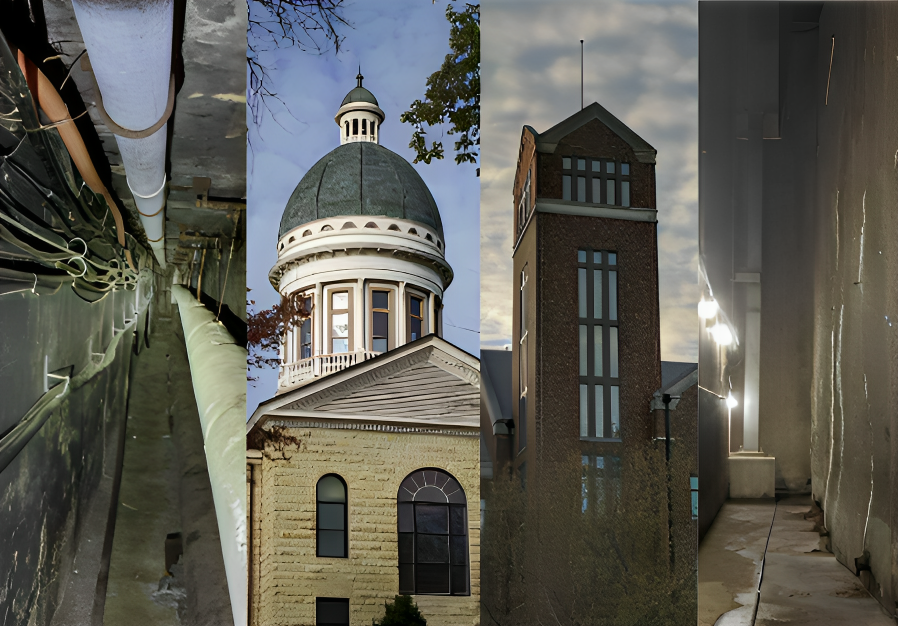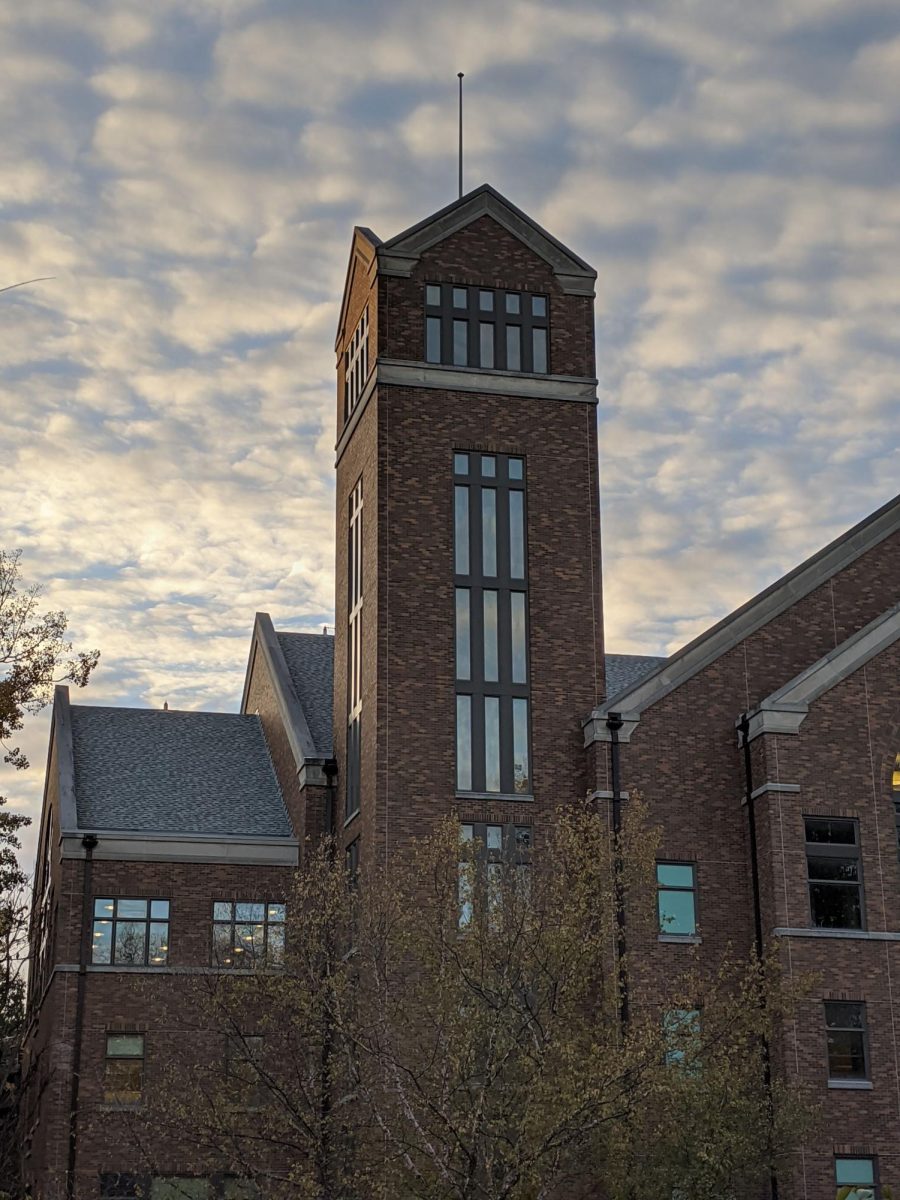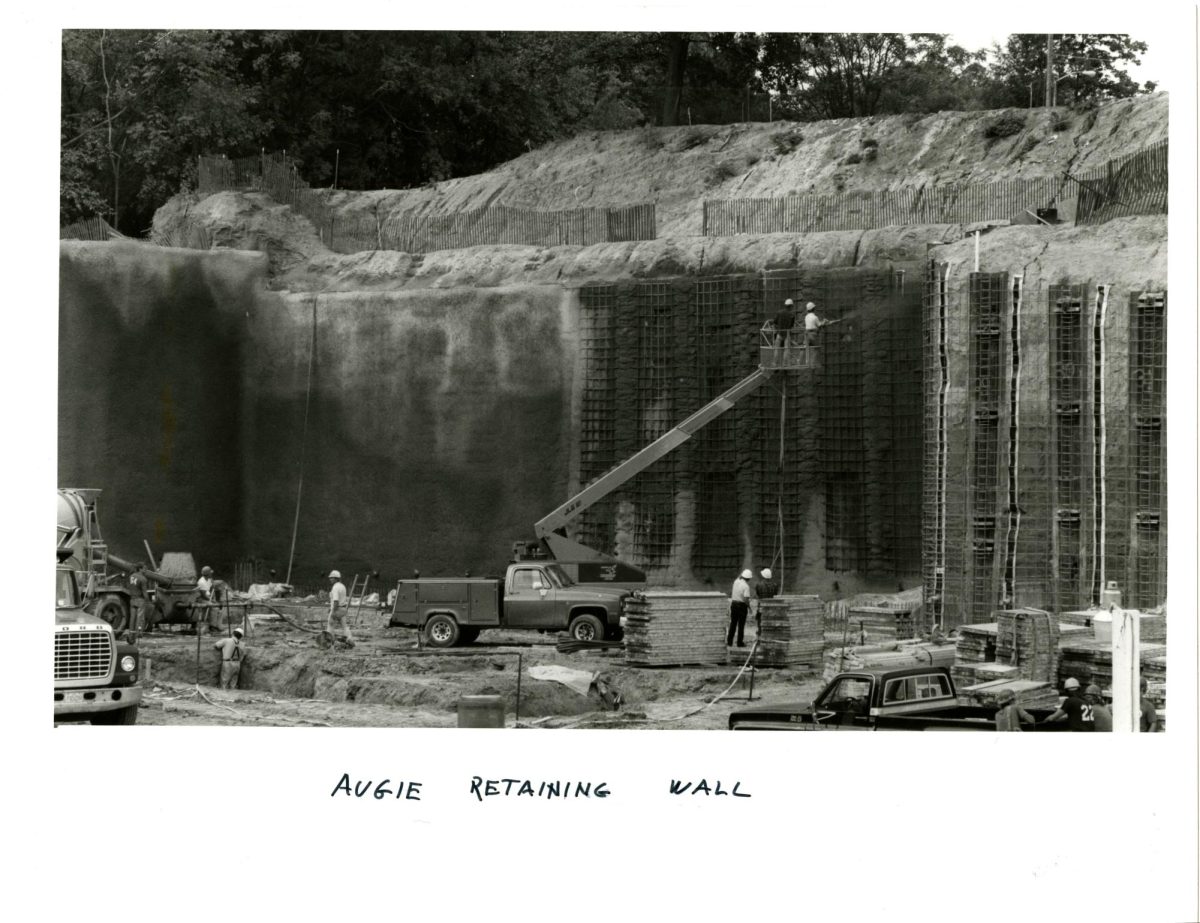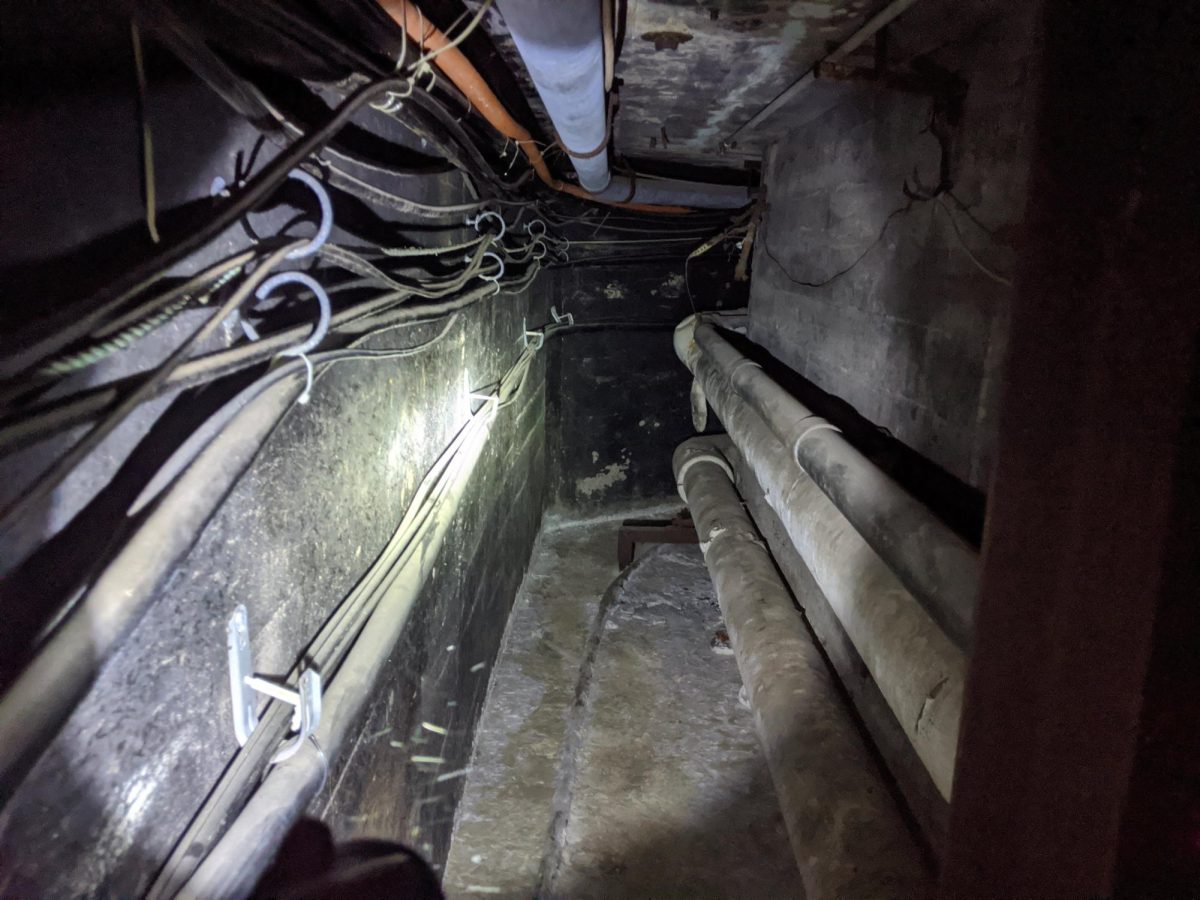There are places at Augustana that are well-loved by students and employees alike. From the Slough Path to the stained glass of Old Main, everybody has their favorite spots. But there are also spaces on campus that are shrouded in rumor because almost no one visits them. These secret places come with rich histories.
One place off the beaten path of Augustana is the Tredway Tower, located on the seventh floor of the library. Students mostly know the tower as an aesthetic feature of the library that’s lit up at night. However, the tower was originally designed to be a “conference room” according to pamphlets in Special Collections from the library’s grand opening, and was labeled “seminar room” in the library’s building plans.
According to Christina Aden, head of circulation at Thomas Tredway Library, an English professor used to hold classes in the tower over a decade ago. However, because of accessibility difficulties and the small size of the room, the tower was used less and less over time.
“When people had sprained ankles or broken legs they couldn’t attend classes, so it’s not something that’s really advisable,” Aden said.
Now this semester, according to Aden, a geography class using drones to map campus has used the tower as an overlook point. Overall, though, student requests for the tower key are sporadic. Typically, more students request the key when they hear about it from someone else.
“Somebody requests it and somebody else finds out and then word spreads, and then it dies down again,” Aden said. “We’ll get probably, I don’t know, anywhere from 10 to 20 requests in a semester. But that could be spread out over the entire semester or that could be all in two days.”
The tower key can only be checked out at the circulation desk to Augustana students with ID for 15 minutes at a time, unlike other library resources that are open to the public. However, alumni may request access to the tower and go up with the library’s approval. According to Aden, two Augie alumni got engaged in the tower.
A second hidden space at Augustana also lies within the Tredway Library. On the first floor is a door that accesses what is known as the Million Dollar Wall, which is off-limits to students. It serves as the library’s retaining wall, anchored into the hill to safely support the library. The wall is necessary because of the composition of the sloping hillside the library was built into.
“There’s topsoil, but then there’s bedrock. And they wanted this building to be anchored, but you can’t anchor into topsoil because it’ll eventually wash away,” Kai Swanson, special assistant to the president, said. “What they did was they drilled holes into the bedrock, and those are anchors. This was used to cover the space between the bedrock and the building itself.”
According to Swanson, the wall was designed to create a margin of space between the library’s exterior and the natural hillside. The design of the retaining wall extends the life of Tredway Library, meaning that the building could theoretically last hundreds of years. As the landforms shift, the wall will eventually shift to meet the exterior wall of the library.
The area where the wall is has a lot of moisture, and the sprayed concrete of the wall has calcified. Augustana periodically checks the condition of the wall and the space between the wall and the library.
“[Structural engineers] monitor it to make sure the wall’s integrity is fine,” Swanson said. “Primarily, it’s about where the beams are, if they’re staying straight and not bending.”
Another off-limits area to students are the steam tunnels underneath the quad and academic buildings. With entrances scattered throughout campus, this is another space that often goes unnoticed by students. The tunnels have been underfoot since the college’s establishment. They’ve always been a part of campus heating and cooling, although they’ve had to expand as more buildings were constructed.
Steam used to be the primary source of heat on the campus, but now the tunnels only heat the older buildings located near the quad and across 7th Avenue.
“This [tunnel system] is used to heat Andreen, Bahls CLC, Denkmann, Evald [and the] Planetarium still. It’s just that heart of campus,” Swanson said.
Since Augustana students really have no reason to access the tunnels, they remain a more secret space on campus. The other reason the tunnels are a secret space is because there really isn’t that much space at all.
“[The tunnels are] big enough for our colleagues to go and access things, but if you ever notice when there’s like a rupture on campus and you see the steam coming… they’re going to have to excavate it,” Swanson said.
The limited space in the tunnels also debunks rumors of underground connections to other schools, such as St. Ambrose. There’s barely enough room for workers to repair the pipes in the tunnels without running into one full of hot steam. A tunnel connection all the way to St. Ambrose also isn’t feasible because of the cost to create and maintain the tunnels.
“Every foot of this is extremely expensive to build,” Swanson said. “In most of our newer buildings and renovated buildings, we’ve come up with higher efficiency heating and cooling solutions so we don’t rely on [the tunnels] as much.”
A lot of history is buried beneath the quad. The highest part of the quad today used to house a gymnasium and a below ground pool. When the gymnasium was torn down, the pool remained buried underneath the soil with the tunnels. The tunnel hatch in that area was kept unlocked when Swanson was a student, and he and his friends would lift the hatch on occasion to warm up in the winter.
Since its construction, nothing has symbolized Augustana and its Swedish history quite like the Old Main dome. The dome was originally designed to match Uppsala University in Sweden, and while students aren’t allowed inside the dome today, that wasn’t always the case.
There are four levels within the dome, accessible by steep ladders. This is a primary reason the levels of the dome aren’t open to students.
“They’re not secret in the sense that we keep them hidden for mysterious purposes,” Swanson said. “They’re just very hard to access, and there’s an equity issue if some people can get there and not everybody.”
On the lowest level are arched doorways on three of the four walls leading to empty rooms. According to Swanson, back in the 1890s, one of the rooms was a science classroom and another held the first geology museum.
Today, the spaces aren’t used because they are hard to access. According to Swanson, even when they were used for classrooms and treasures 140 years ago, there was a narrow staircase that wouldn’t pass modern safety inspections.
The next level up has rectangular windows on all sides, providing a view over campus and all the way to the Mississippi. The walls are insulated to protect the support beams from extreme temperatures, and the windows were sealed to protect the interior.
On the third level are half-moon shaped windows, each with a strip of LED lights beneath to illuminate it. The support beams on this level are covered in hundreds of carved and painted students’ names and class years, dating as far back as 1921 and as recent as 2018.
The highest point of Old Main is the bell tower, which was built from parts of Augustana’s original building. This part of Old Main’s dome is accessible only by climbing a vertical ladder and peeking through the latch in the floor. The bell chamber is surrounded by small columns on all sides, connected by netting that keeps birds out but lets the wind through.
Just as the underground bedrock of the library is preserved for generations to come, the dome of Old Main will continue to stand as the shining symbol of Augustana’s rich past and future legacy.






